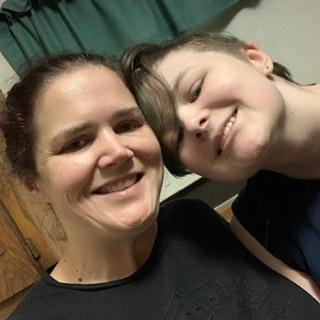Find the latest news from the Office of Accessibility. Once a month we will bring you tips, articles, and ways to learn more about digital accessibility. Want an easier way to stay informed? Subscribe to the Accessibility Newsletter!
Connect with all of your loved ones this holiday season
11/19/2020 7:00:00 AM

Connecting during the holidays is more important now than ever. Although we may be doing it in different ways, we have an opportunity in 2020 to connect with accessibility in mind. Consider digital accessibility as you plan your holiday experiences to ensure that all those you are close to can access them! Think about the needs of your family and friends who:
This month we have what you need to plan more accessible:
with ideas from citizens, state employees, and Office of Accessibility staff.

“I love e-cards at the holidays or e-letters. When they come to your email, no one else can snoop at it unless you share it. An e-card is awesome if it is animated,” says Tom Reed. Reed has personal care attendants and sometimes family members assist him with some tasks, but reading his mail is something he prefers to do on his own.
Digital mail, through e-cards or email, is more accessible for him but adds that there are other specific accessibility considerations to remember, “Nothing as far as my disability, but people with epilepsy may not appreciate the animations.”
Reed raises a good point. If you have a family member or friend who has seizures, choose your holiday cards carefully. Let people know what the content contains, such as animations, before they open it. Mozilla has an article with more information: Web accessibility for seizures and physical reactions.

When asked about this topic, Justin Smith spoke about the importance of online family gatherings that are accessible. “I'll be getting together with grandparents and other relatives online this year for the holidays. For me, it works best to use meeting technology that has auto-captions because I have auditory neuropathy and hearing loss. It helps to see people's faces when they're speaking because reading lips helps me better follow the conversation. It's also great just to be able to see the smiles, hear the laughter, and not feel so far away.”
The Office of Accessibility has a lot of information that can help people host accessible online get-togethers. We list them in the checklist at the end of this article.
Smith solved the family letter issue in a creative way, “I am a blogger and instead of writing holiday cards, I write an end of the year blog post with highlights from my year. That helps me stay connected with friends, family, and people who follow my blog.” His blog can be found at Justin Smith Writes.
Select a hosting site that enables you to create an accessible blog. The American Federation for the Blind provides tips in How to Make Your Blog Accessible for Blind Readers. This includes great information that can improve the accessibility of your posts for everyone. Remember – blogs are public, so anyone can read the information you share.
Another option is to create an accessible Word document or PDF and attach it to an email. The Office of Accessibility has lots of great information to get you started on the Accessible Electronic Documents page.

“One thing that not a lot of people know about me is that accessibility plays a large role in my life. I have a stepsister who is a quadriplegic (Cerebral Palsy) and my son, Max, is neuro divergent (ADHD with sensory processing disorder),” says Samantha Fischer, the Digital Accessibility Coordinator at the Minnesota Department of Employment and Economic Development.
“Family means a lot to us and it’s important to receive greetings during the holidays to help us feel connected. Like many others in the world, with COVID we haven’t been able to get together like we’ve wanted to. However, recently, my nephew, who was stationed in Afghanistan, sent out an electronic message letting us all know he returned safely. It was great to see him and hear his voice, but there were some issues when my son tried to watch/listen that made it very difficult for him.”
Fischer offers some suggestions that her son would like everyone to consider when sending messages this year:

“I love getting electronic holiday cards that have an audio greeting or alt text descriptions. Something that tells me what’s going on in the card, who is in it, and a description of any images or photos. Make sure the audio is clear if you use it so people who are hard of hearing can enjoy it too.
I also enjoy written (digital) letters with good description and colorful descriptive language that paint a picture for me. Please keep in mind that not everyone can see photos or images. A good description goes a long way.”
-Lolly Lijewski, Digital Accessibility Coordinator, Minnesota Department of Human Services
Like all types of successful projects, starting early and planning is key. Here are some key considerations to include in your plan.
Just a little planning can go a long way towards creating more accessible holiday experiences and ensure all your loved ones can access your greetings.
Would you like to learn more about the accessibility work being done by Minnesota IT Services and the State of Minnesota? Once a month we will bring you more tips, articles, and ways to learn more about digital accessibility.
Accessibility